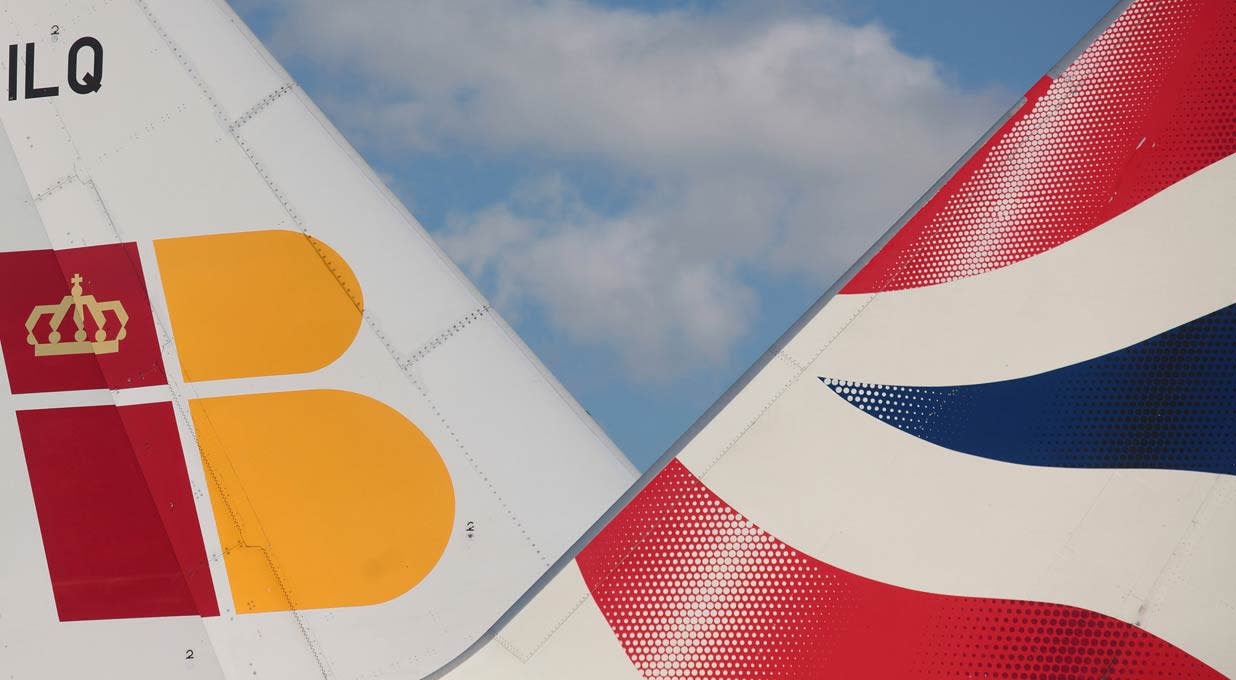IAG’s fourth-quarter revenue rose 11.4% to €8.0bn (€7.7bn expected). Growth was fuelled by increased capacity, higher ticket prices and planes running more full on average.
Operating profit rose 91.4% to €961mn (€754mn expected), driven by the increased revenue and lower fuel costs.
Free cash flow improved from €2.2bn to €3.6bn, largely due to the increased profits. Net debt moved €1.7bn lower to €7.5bn.
In 2025, capacity is expected to increase by 3% as “strong customer demand continues”. The group is also targeting “significant free cash flow” in the new year.
A final dividend of €0.06 had been announced, taking the full-year total to €0.09, after a four-year suspension of payments. A €1.0bn share buyback programme has been announced and is set to complete by March 2026.
The shares rose 4.1% in early trading.
Our view
British Airways owner IAG delivered a strong finish to the year, with fourth-quarter profits landing well ahead of market expectations. The beat gave management the confidence to announce a new €1bn share buyback programme, which was well-received by markets on the day.
The group's market-leading networks, strong brands, and fierce operational focus continue to drive performance skyward. Despite increased capacity, planes are flying with more passengers on board on average, which shows that demand for the group’s routes remains strong despite the current pressure on consumer finances.
Given the high fixed costs associated with flying planes, squeezing more passengers onto each flight is key to increasing profitability. Easing fuel costs have also helped the bottom line. But keep in mind that external shocks could send fuel prices higher again. That risk looks well hedged in the short term, but the group will always be at the mercy of external factors.
With its London base, IAG enjoys a larger share of premium passengers than most airlines, as the capital serves as the world’s leading hub for premium air travel. These high-value customers are willing to pay more for a better seat, which is helping to profitability.
That’s resulting in healthy free cash flows, strengthening the balance sheet. There’s also plenty of cash left over to hand to shareholders, with a return of dividend payments and continued share buybacks. As always though, shareholder returns are never guaranteed.
There are some things to keep in mind, though. While pent-up travel demand still has room to run, it can't go on forever. IAG’s also investing heavily in the business. This includes expanding its fleet, upgrading its digital infrastructure and leveraging data in a bid to improve the customer experience. While we support the strategy, if these investments fail to deliver the required return, sentiment may sour.
IAG didn’t give any full-year profit guidance. But with strong demand and easing cost pressures, we see some upside to current market forecasts. The valuation looks attractive relative to the long-term average on an EV/EBITDA basis (a measurement of company worth relative to its cash profits). But the cyclical nature of the industry, as well as the sensitivity of demand to macro-events, shouldn’t be overlooked. Ups and downs along the way can’t be ruled out.
Environmental, social and governance (ESG) risk
The transport industry is medium risk in terms of ESG, with European firms managing them better than others. Carbon emissions, product governance, and quality & safety are the biggest risk drivers. Other key areas are emissions, effluents & waste, labour relations, and employee health & safety.
According to Sustainalytics, IAG’s management of ESG risk is strong.
The group has sustainability, environmental and social programmes integrated into its core business strategies. Executive compensation is also linked to ESG performance targets. However, its disclosures and reporting of ESG issues falls short of best practice.
IAG key facts
All ratios are sourced from Refinitiv, based on previous day’s closing values. Please remember yields are variable and not a reliable indicator of future income. Keep in mind key figures shouldn’t be looked at on their own – it’s important to understand the big picture.
This article is not advice or a recommendation to buy, sell or hold any investment.No view is given on the present or future value or price of any investment, and investors should form their own view on any proposed investment.This article has not been prepared in accordance with legal requirements designed to promote the independence of investment research and is considered a marketing communication.Non - independent research is not subject to FCA rules prohibiting dealing ahead of research, however HL has put controls in place(including dealing restrictions, physical and information barriers) to manage potential conflicts of interest presented by such dealing.Please see our full non - independent research disclosure for more information.


